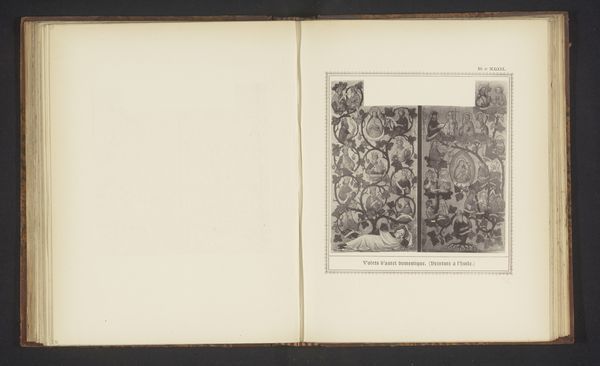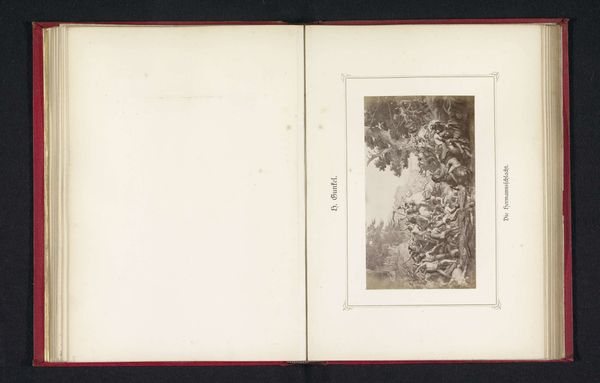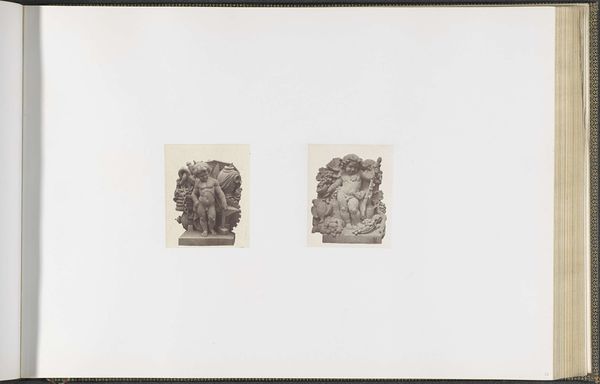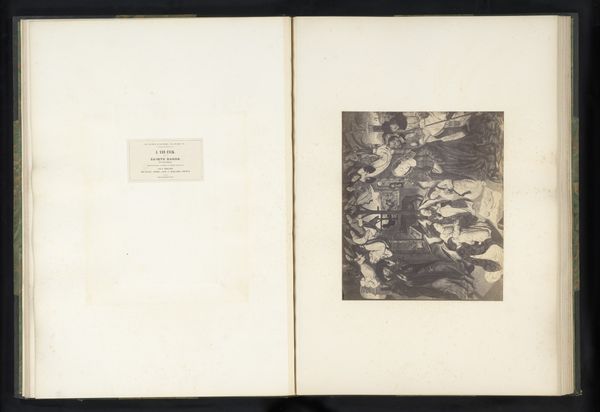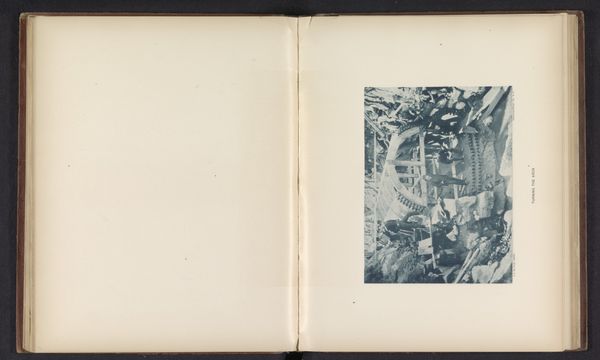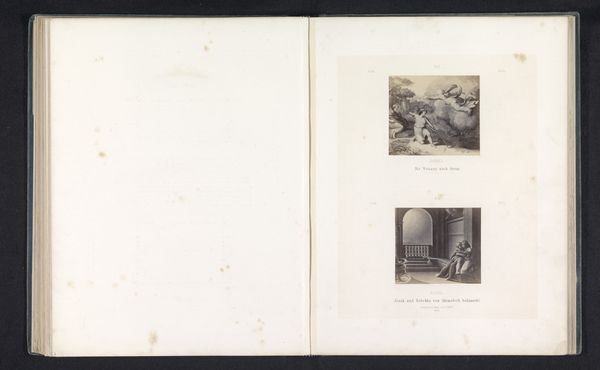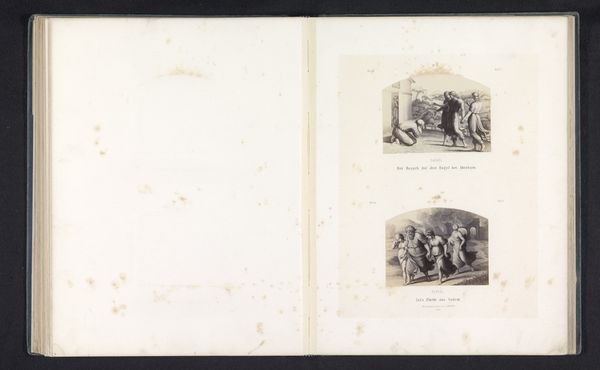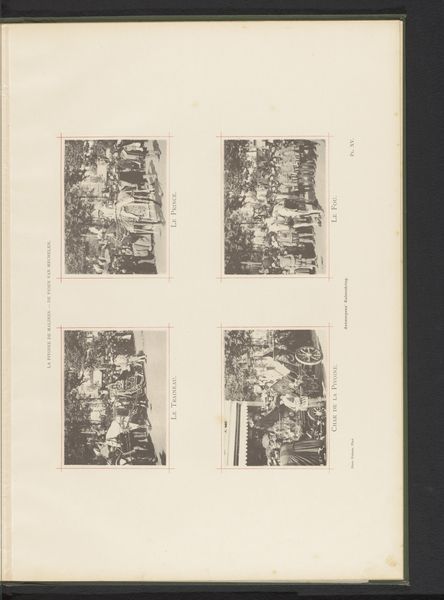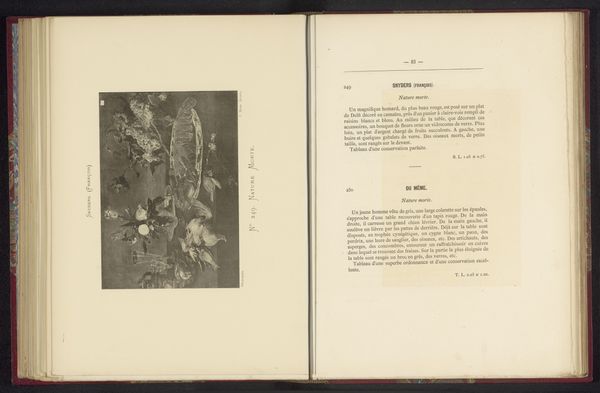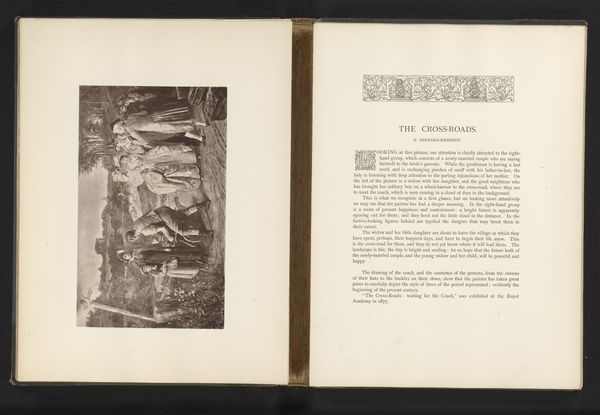
Twee basreliëfs van de Église Saint-Lô te Bourg-Achard, voorstellende de beproeving en marteldood van de heilige Eustachius van Rome before 1895
0:00
0:00
print, relief, engraving
#
medieval
# print
#
relief
#
history-painting
#
engraving
Dimensions: height 243 mm, width 321 mm
Copyright: Rijks Museum: Open Domain
Curator: I find myself captivated by these paired bas-reliefs, a historical record captured as engravings printed sometime before 1895. They depict scenes from the life and martyrdom of Saint Eustachius, originally part of the Église Saint-Lô in Bourg-Achard. Editor: My initial feeling is one of crowded darkness. The images, presented side-by-side, feel chaotic, full of struggling figures packed into a limited space. You really have to strain to discern what's going on materially. Curator: The density speaks to the layered symbolism of the medieval mindset. Each figure, each element, carries meaning – a specific torment, a virtue tested. Take, for example, the depiction of Eustachius being roasted alive, a powerful testament to faith overcoming earthly suffering. Editor: That very torment is what makes me focus on process and materiality. I wonder about the physical act of carving such detail. What tools would have been used to shape the original reliefs? How did the sculptors' labor and economic conditions influence the style and choices they made in creating them? Curator: Think, too, about the intended audience. These were created to inspire piety and obedience in a largely illiterate population. The imagery acts as a mnemonic device, embedding the lessons of the saint's life within the visual culture. Editor: It’s so interesting how prints allow that kind of broader accessibility. That transformation from relief to engraving would have created additional jobs, further integrating sacred imagery into daily production and, likely, domestic spaces as devotional objects, of a sort. It democratizes that initial, elite sacred experience in stone, doesn't it? Curator: Precisely. The story transforms across forms. They offer potent visual symbols, resonating through time and acting as anchors to a shared, historical faith. Editor: Well, looking at the engravings has certainly given me food for thought around production, accessibility and meaning in religious art. It pulls the stone into our space to be felt on other material levels.
Comments
No comments
Be the first to comment and join the conversation on the ultimate creative platform.
